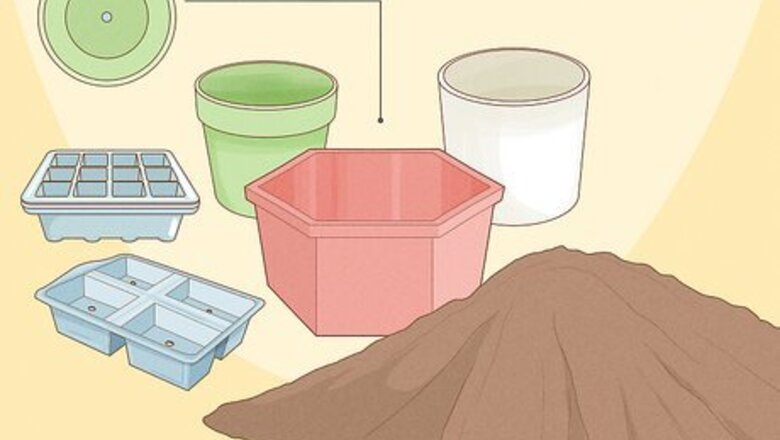
views
Preparing to Plant Your Seeds
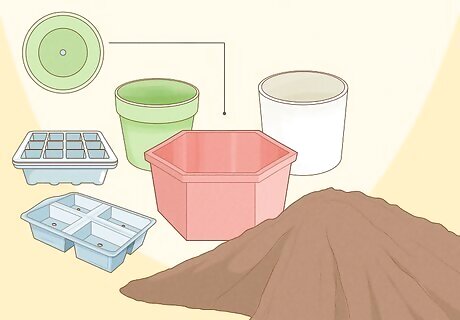
Get your containers and soil. Whether you are starting seeds so that you can transplant them into your garden or into larger containers later, you will want to start them in seed starting trays or a large pot, These are large and deep enough so that the seeds will have room to grow, and are compartmentalized to avoid overcrowding. You will also want to select a soil made especially for growing seeds. Make sure your seed starting trays or pots have holes for proper drainage. If you choose to plant in a pot rather than starting in trays, a six inch (15 cm) pot should be good enough to start. Look for a soil that is made especially for starting seeds, or make your own by combining 1 part each of peat moss, vermiculite, and perlite.
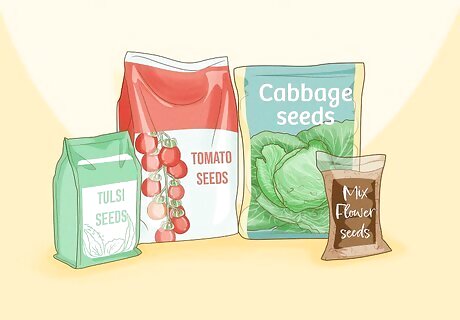
Select your seeds. Starting plants, especially herbs and vegetables, from seeds is not always easy, so it’s important to select seeds that have a good chance of being successful. Herbs and vegetables such as lettuce are good choices to start in pots. Remember to check your hardiness zone to make sure you are growing a plant that will survive in your area if you plan to keep it outdoors or transplant it later on. Look at your local nursery or farmer’s market for seeds that have been carefully screened and selected for quality.
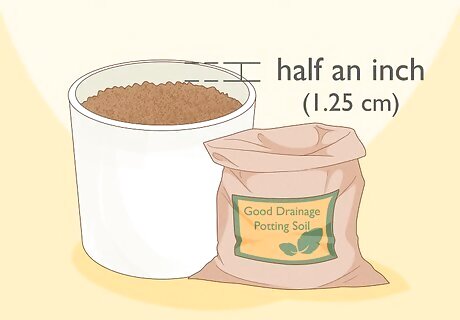
Get your pots ready for planting. Rinse out your pots or seed trays to remove any dust and particulates, and moisten your soil. The soil should be damp but not wet. Then, fill your pot up to half an inch (1.25 cm) from the top with your soil mixture. It is also sometimes recommended that a thin layer of sand be added to the bottom of the pot before soil to promote better drainage.
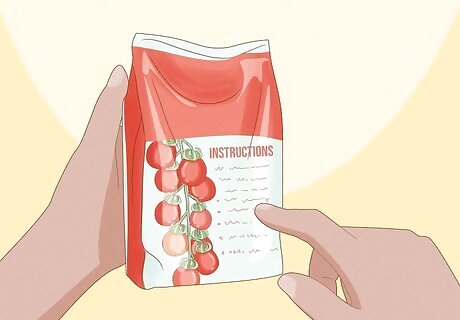
Read your seed packet. Your seed packet will typically let you know how deep to plant your seeds, and how far apart each seed should be. Consult your seed packet, or otherwise talk to the seed provider, to get specific instructions regarding how deep and how far apart seeds need to be planted. Your seed packet will also tell you the best time of year to start sowing your seeds, if you plan on keeping the pots outdoors.
Sowing Your Seeds
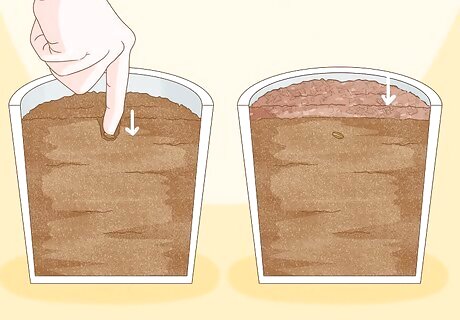
Place seeds in the soil. Once you are fully prepared to start planting, place your seeds in the pot as indicated on the seed packets. Gently press in the seeds, or lightly cover them with a seed-starting mixture or mulch. You can use toothpicks to tweezers to help you distribute and press in larger seeds.
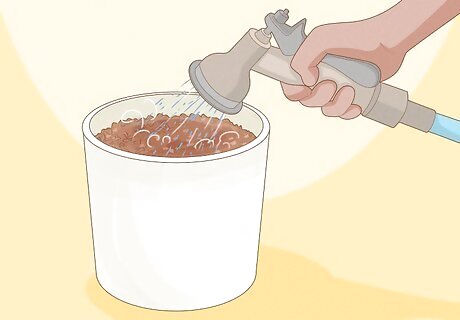
Moisten the seeds. Use a mister or a small watering can to moisten the seeds after planting. The top layer of seed starter or mulch should be damp, but not wet. Be sure to add small amounts of water at a time, as adding too much could displace or wash away the seeds.
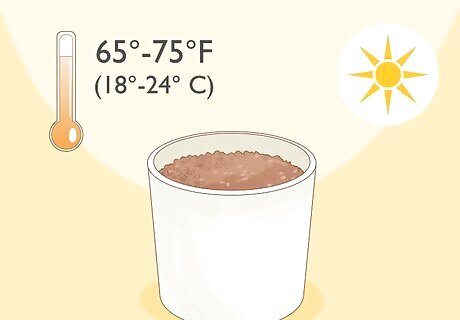
Ensure proper light and temperature. Most seeds will need a consistent temperature of between 65° and 75° Fahrenheit (18° to 24° C) and regular exposure to sunlight to properly germinate. Keep your seeds in a climate controlled environment and a sunny area where your seeds will get a full day’s worth of exposure. If you live in an area where sunlight or temperature is variable, you may also consider purchasing a sun lamp or heating mats to help encourage your seeds to grow. Some seed starting trays come with a cover to create a warm, moist environment for the seeds. Keep this on until the seeds sprout from the soil. If you don't have a cover, you can slip a plastic bag over the pot to keep moisture in until the seeds sprout. Keep the seeds out of direct sunlight while the cover is on, or they will overheat.
Maintaining Your Seeds
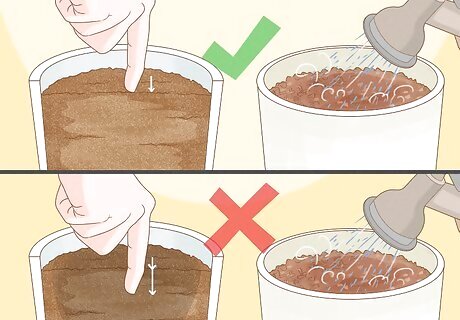
Water seeds as needed. Water the seeds as the soil starts to dry. It should always be moist, but never wet or muddy. Do not water the seeds if the soil is already moist to the touch, as overwatering your plant can be just as harmful as underwatering.
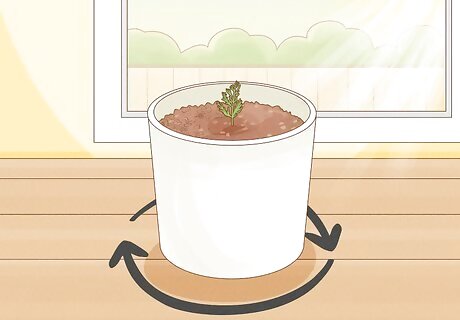
Turn the seeds. After the seeds have sprouted, give your pot a quarter turn each day. This will prevent your seeds from overreaching toward the light, which can cause weaker stems.
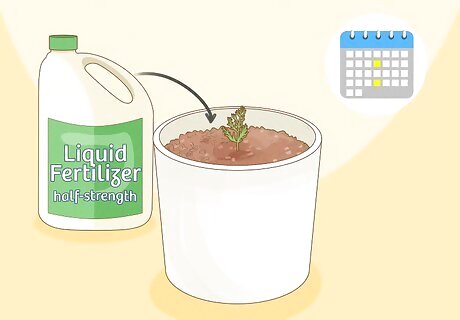
Feed your seeds. Once your seeds start to sprout leaves, you will need to ensure they get proper nutrients. Use a half-strength liquid fertilizer on a weekly or every-other-week basis to keep them growing strong. You can increase the strength of the mixture gradually as the plants grow bigger.
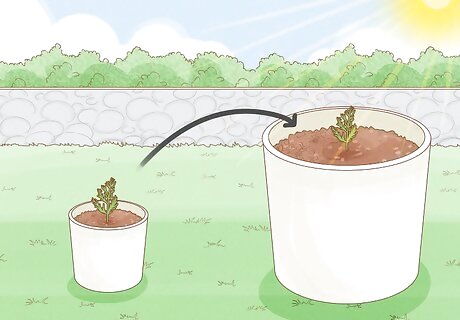
Transplant your seedling when necessary. If you started your seedlings in trays, you will eventually need to transplant them to a pot or outdoors. Likewise, as potted plants grow you may need to move them into larger pots. Monitor your plant to make sure it has plenty of room to grow in the pot. If it is outgrowing its space, transplant it into a larger container.




















Comments
0 comment